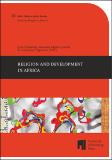Youth, Religion, and Development in Africa
Abstract/
The youth are a force to reckon with in most countries across the globe. They form the largest category of most countries’ population. In many instances, the youth enter popular discussions as a difficult lot; a problematic group. In most cities and rural localities, there are youth groupings that are popularly known to cause trouble. In Africa, they have been branded many names that characterize what societies believe they are. Ojok and Acol (2017: 96) give examples of these: township youth in the heyday of apartheid South Africa; rarray boys in the ghettos of Freetown; egbesu boys in Nigeria’s oil delta; and, area boys in Lagos. Other examples are Bagdad boys in informal settlements of Nairobi and the renowned Mungiki in Kenya. In most cases, in the African context, the youth are perceived as perpetrators of political and civil conflicts, crimes. The main challenges that the youth seem to face are blamed for their involvement in crime.
The youth face mass unemployment or lack of decent work opportunities, ineffective and undemocratic political participation structures, exclusion, poor health problems, poverty, protracted conflicts, HIV and lack of education (Commonwealth 2016; Makori 2015). These social and economic challenges define youth’s inability to realize their potential. They have been sidelined and pushed towards certain forms of popular culture including music, dance, art-mainly secondary sectors of the economy where they have to struggle on their own to make ends meet. They are relegated to secondary positions in any form of leadership and, as Abbink (2005) indicates, youth are facing tremendous odds and do not seem to have the …

